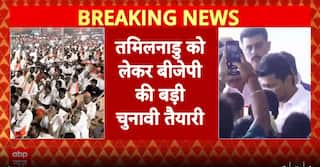As 'Biparjoy' Barrels Towards Gujarat, IMD Expert Explains Why India Is Seeing Rise In Pre-Monsoon Cyclones
The number of pre-monsoon cyclones in both Bay of Bengal and Arabian Sea has tripled in the past five years.

With Cyclone Biparjoy set to make a landfall in Gujarat's Kutch district on Thursday, experts have highlighted a rise in the number of pre-monsoon cyclones on both the east and west coast. The number of pre-monsoon cyclones in both Bay of Bengal and Arabian Sea has tripled in the past five years.
Biparjoy is on course to become the cyclone with the longest lifespan in the Arabian Sea, according to the India Meteorological Department (IMD) data.
For several decades, India used to see around four post-monsoon cyclones every year. But, the number of pre-monsoon cyclones has increased from one to four in just a matter of five years.
Experts have cited warming of both the Arabian Sea and the Bay of Bengal by more than 1 degree Celcius in the pre-monsoon season as the reason behind the increasing frequency of cyclones.
"There used to be one pre-monsoon and four post-monsoon cyclones but recently it has been seen that since 2018, it has changed in Arabian Sea and Bay of Bengal. The temperture in Arabian Sea has increased by 1.4 degree Celcius whereas in the global ocean it has risen by only 0.7 degree. This means that cyclones will be more intense and damaging due to more heat and moisture," IMD scientist Uma Shankar Das told ABP News in an interview in 2021.
In India, cyclones usually take place in the post-monsoon season from August to November but now the frequency has increased in the April-June period.
"The normal track of cyclones in Arabian Sea is towards Arab countries but this has changed north eastwards, resulting in cyclones on Indian land," Das had said.
In fact, pre-monsoon cyclones have been found to be more destructive than post-monsoon cyclones. The speed of pre-monsoon cyclones are more due to more moisture and speed of winds, making it more devastating. Moreover, pre-monsoon cyclones have been found to change its place of landfall, making it difficult to predict. Post-monsoon cyclones follow a route and are predictable.
Pre-monsoon cyclones kill more marine life due to the heat it generates in the sea.
Some of the major pre-monsoon cyclones that have led to massive destruction in recent years are -- Aila, Fani, Amphan, Yaas (in Bay of Bengal) and Vayu, Nisarga and Tauktae (Arabian Sea).
Related Video
Punjab News: AAP Leader Shot Dead During Wedding in Amritsar





































